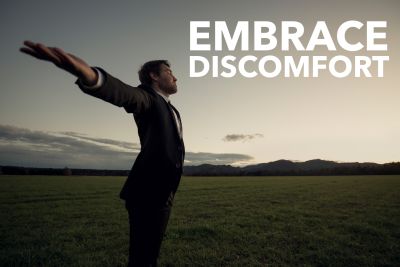
We rise by lifting others. – Robert Ingersoll
I read a story by Jeffrey Zaslow some time ago as he recalled his father coaching a team of eight-year-olds in baseball. “He had a few excellent players and some who just couldn’t get the hang of the game. Dad’s team didn’t win once all season. But in the last inning of the last game, his team was only down by a run. There was a boy who had never been able to hit or catch the ball. With two outs, it was his turn to bat. He surprised the world and got a single.”
The next batter, Zaslow explained, was the team slugger. He continues, “Finally, Dad’s team might win a game. The slugger connected, and as the boy who hit the single ran to second base, he saw the ball approaching him. Not certain of baseball’s rules, he caught it. Final out! Dad’s team lost.”
“Quickly, my father told his team to cheer. The boy beamed. It never occurred to him that he lost the game. All he knew was that he had hit the ball and caught it for the first time. His parents later thanked my dad. Their child never even got in a game before that season. We never told the boy exactly what happened. We didn’t want to ruin it for him. And ‘til this day, I’m proud of what my father did that afternoon.”
The story is an inspiring example of what it means to cheer for others and support those around you even when it would be all too easy to do otherwise.
In far too many workplaces, we see cultures of unhealthy competition instead of healthy collaboration. Getting ahead seems to be more important to some than getting along.
However, it will come as no surprise that productivity and workplace culture significantly improve with recognition and seeing each other as colleagues, not as competitors.
In a Nectar State of the Workplace survey, respondents weighed in by affirming the following:
- 83.6% of employees surveyed said that recognition drives their motivation to succeed at work
- 77.9% of employees surveyed said they would be more productive if their employer recognized them more frequently
- 81.9 % of employees said that recognition for contributions improves employee engagement
These statistics should not surprise any leader who sees, recognizes, and values the value of his or her team members. Good leaders understand this and make it a practice.
Let me ask you, who are you cheering for? Can you celebrate the successes and wins of those around you even when not experiencing one yourself?
As a leader, your ability to cheer on those around you happens when these three things happen.
You can cheer others when you set aside your ego
The leadership lesson here is simple – it’s not about you. You will be a more secure leader when you acknowledge and embrace this fundamental premise of leadership. When you can check your ego at the door, you win and are now positioned to cheer those around you with no hidden agenda or motive.
You can cheer others when you value the team over yourself
Your team will succeed when they see what they do as something greater than themselves. While roles, responsibilities, and contributions will vary, the team wins when each person values the team over self.
You can cheer others when you don’t care who gets the credit
Lao Tzu said, “A leader is best when people barely know he exists, when his work is done, his aim fulfilled, they will say: we did it ourselves.” And this is the beauty of your role as a leader- to shine the light on others as the wins are celebrated.
Who are you cheering for today?
©2024 Doug Dickerson



 In his book,
In his book, 




